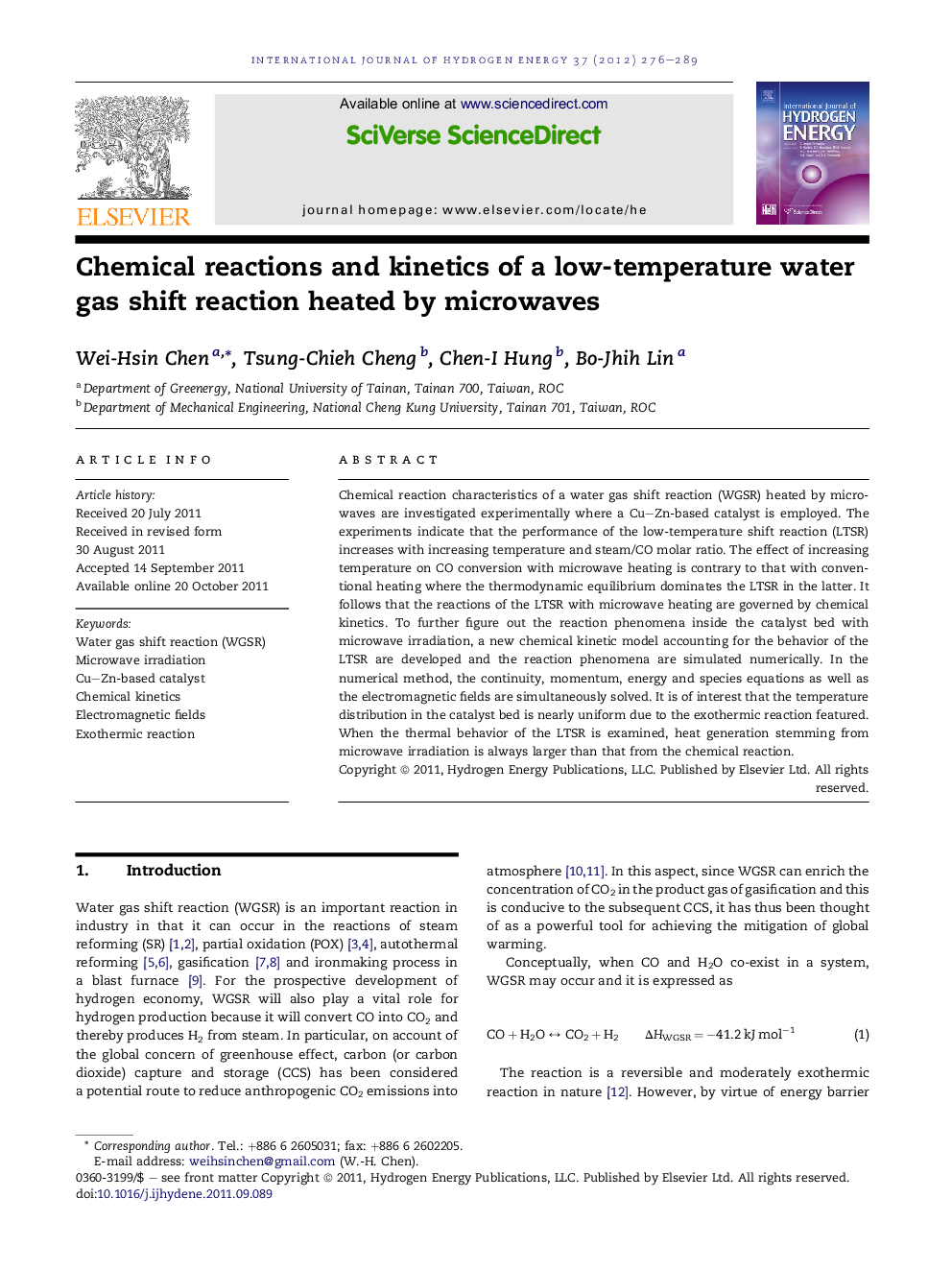| Article ID | Journal | Published Year | Pages | File Type |
|---|---|---|---|---|
| 1277142 | International Journal of Hydrogen Energy | 2012 | 14 Pages |
Chemical reaction characteristics of a water gas shift reaction (WGSR) heated by microwaves are investigated experimentally where a Cu–Zn-based catalyst is employed. The experiments indicate that the performance of the low-temperature shift reaction (LTSR) increases with increasing temperature and steam/CO molar ratio. The effect of increasing temperature on CO conversion with microwave heating is contrary to that with conventional heating where the thermodynamic equilibrium dominates the LTSR in the latter. It follows that the reactions of the LTSR with microwave heating are governed by chemical kinetics. To further figure out the reaction phenomena inside the catalyst bed with microwave irradiation, a new chemical kinetic model accounting for the behavior of the LTSR are developed and the reaction phenomena are simulated numerically. In the numerical method, the continuity, momentum, energy and species equations as well as the electromagnetic fields are simultaneously solved. It is of interest that the temperature distribution in the catalyst bed is nearly uniform due to the exothermic reaction featured. When the thermal behavior of the LTSR is examined, heat generation stemming from microwave irradiation is always larger than that from the chemical reaction.
► Low-temperature shift reaction (LTSR) heated by microwaves is investigated experimentally. ► The reactions of the LTSR with microwave heating are governed by chemical kinetics. ► A new chemical kinetic model accounting for the behavior of the LTSR are conducted. ► LTSR is also studied numerically. ► Heat generation due to microwave irradiation is larger than from chemical reaction.
